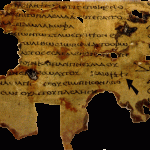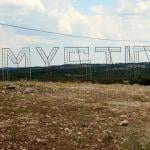On ntgateway.com/bnts, more paper abstracts have appeared from the various seminar groups. I will highlight a few:
Jesus Seminar
‘How did Jesus cure?’
Given the historical likelihood that Jesus of Nazareth was believed by many of his contemporaries to have been a successful healer, how did he effect such cures? It has become common in NT studies to avoid such questions by either declaring them inadmissible or providing supernaturalist explanations which would be unacceptable in any other discipline and are not usually considered appropriate when looking at comparable figures with reputations as healers in antiquity. In recent years scholarship has tended to focus increasingly on how Jesus healed the social experience of illness, whilst largely avoiding the awkward question of why recipients also believed that they had been physically cured of disease. It is true that a number of scholars, often when providing justifications for accepting the historicity of the healing traditions, do venture some non-supernaturalist explanations, alluding to possible psychosomatic factors, but these remarks, although often quite central to their arguments, are inchoate, ill thought through, and surprisingly anecdotal. However, by engaging with more recent anthropological literature we may be able to go some way to providing a more plausible understanding of the processes that led contemporaries to make this assessment about Jesus.
In the ‘Use and Influence of the NT’ seminar note:
‘What is Reception History and How Should it Affect Biblical Studies in the Academy?’In this paper an attempt is made to discuss two prominent, but supposedly separate, modes of discourse within Biblical scholarship — ‘Historical Criticism’ and ‘Reception History’ – and to examine the exact nature of their inter-relatedness. The former finds the meaning of these texts in a virtual encounter with an imaginary audience constructed by the scholar/theorist (i.e. the ‘what they meant’ to the kind of audiences envisaged by much of current historical criticism) whereas the latter sees the meaning of these texts in a visible encounter with a real audience (i.e. the “what they have meant” to the specific individuals and groups whose recorded responses form the core subject of much of the history of exegesis). Historical critical approaches will be illustrated here by the account of the person and actions of Joseph of Arimathea in Mark’s Gospel and its meaning for the otherwise unknown audience constructed by historical critical scholars. Reception History will be illustrated by the actual response to the Markan account of Joseph preserved in the Gospel of Matthew. The paper will go on to argue, however, that the role of the scholar/theorist in the construction of the imaginary audiences of the historical critics inevitably means that such methods can only be understood as a specific sub-set of ‘Reception History’, one in which the real response of the contemporary critic is enfolded within and re-categorised as the imagined response of the original audience(s). The paper concludes by discussing how an acceptance of this re-description of our discipline might affect the kinds of academic activities associated with Biblical Studies, here primarily the teaching of that subject to undergraduates.
And, in the Acts seminar,
‘Trying Paul or Trying Rome? Judges and Accused in the Roman Trials of Paul in Acts’This paper asks who is really on trial in Luke’s presentation of the trials of Paul before Roman judges in Acts: Paul or the Roman empire. It has been noted that in the trial of Jesus in the Gospels, especially John, there is an undercurrent of Pilate and the Jewish leadership bring on trial, rather than Jesus. After considering the trial of Jesus in Luke 23, this paper explores the Pauline Roman trials in Acts before Gallio (Acts 18:12-17), Felix (Acts 23-24) and Festus (Acts 25-26) from this angle. I argue that Luke gives a picture of the empire’s servants which is rather more mixed than has been understood previously by both those who argue that Luke is presenting an apology for Christianity to the empire or for the empire to Christians.











